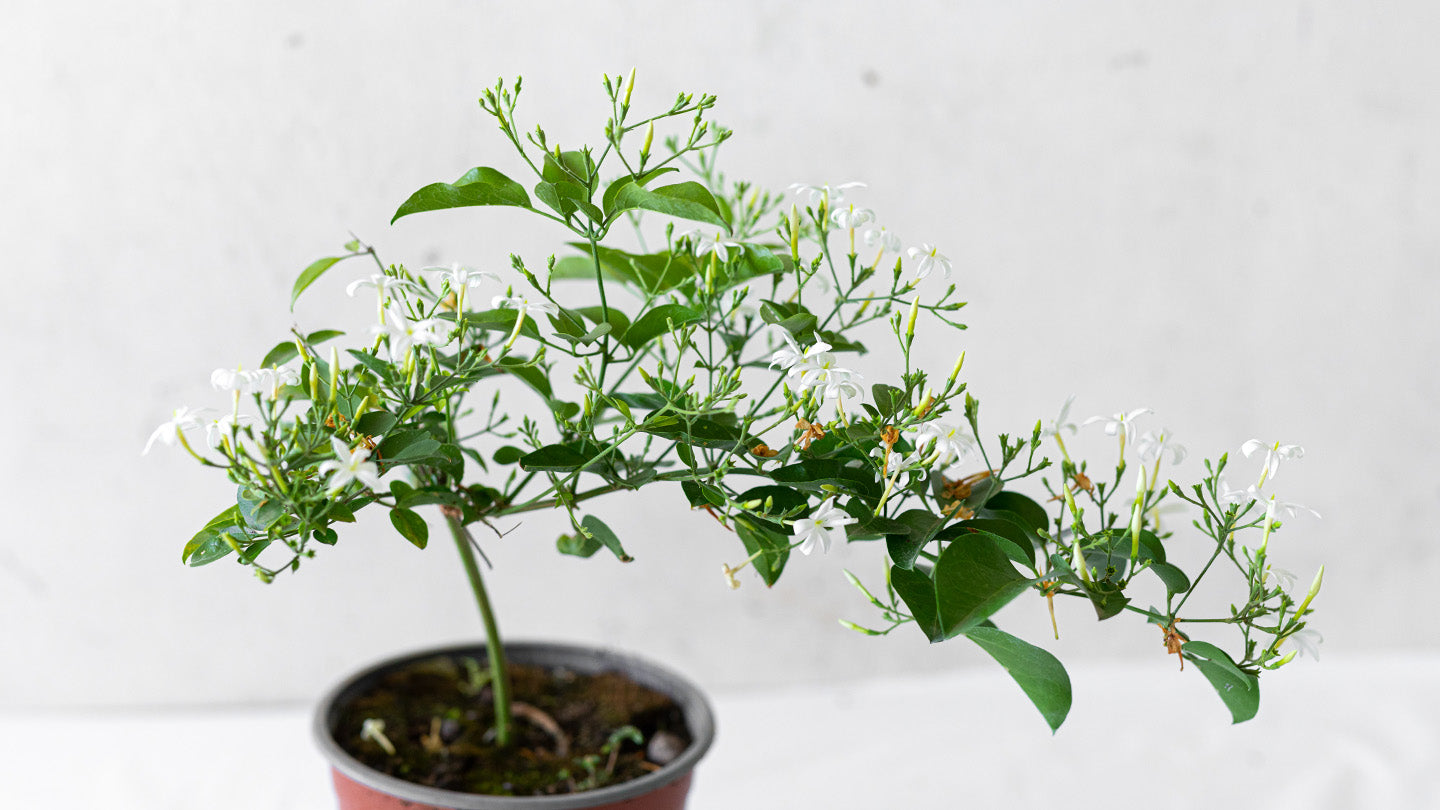cybloom
French Jasmine
Regular price
€8,50 EUR
Regular price
€9,50 EUR
Sale price
€8,50 EUR
Unit price
per
Tax included.
Couldn't load pickup availability
Family: Oleaceae
Origin: Native to warm regions of Asia and Eurasia
The Size: 1.6 ft. tall
Temperature & Humidity: The temperature preferences for vining jasmines vary by species. These plants are much more cold-tolerant than many people think and have no problem tolerating fall temperatures of 40 degrees Fahrenheit.
Lightning: Light requirements vary by species, but most do well in full sun to partial shade. White jasmine (J. polyanthum) prefers bright light and can even handle some direct sunlight. When grown indoors, locate it in the brightest location in your home.
The Soil: For indoor plants, any standard peat-based potting mix with added drainage material will do a good job. When planted outdoors, vining jasmines require loose, humusy soil that is very well-drained with a soil pH range of 5.5 to 7.0.
The Soil: For indoor plants, any standard peat-based potting mix with added drainage material will do a good job. When planted outdoors, vining jasmines require loose, humusy soil that is very well-drained with a soil pH range of 5.5 to 7.0.
Watering: Garden soil or potting mix should be kept lightly moist but not saturated. The plant can be allowed to dry out slightly in the late fall and winter. With indoor plants, make sure the pot has good drainage.
Fertilizer: Feed with a well-balanced but diluted strength liquid fertilizer throughout the growing season. For the amount to use, follow the product label instructions.
Reproduction: Start jasmine seeds about three months before your average last frost date. Soak the seeds for 24 hours, then plant them in small containers filled with moist, nutrient-rich potting soil. Cover the containers with plastic wrap or domes and set them in direct sunlight. Germination can take up to 30 days. When the seedlings emerge from the soil, remove the plastic covering. Keep the soil moist until the seedlings form two sets of true leaves, then transplant them to a larger container, or if the time of year is right, transfer them into the garden.
Features of Care: To grow jasmine, provide it with some direct sunlight in the summer, constant moisture throughout the year (although a bit drier in the winter), and cooler temperatures in the fall to stimulate flowering


